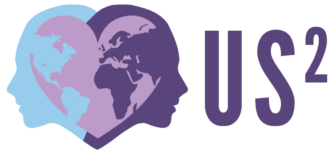The Women’s Suffrage Movement is celebrated as a major turning point in United States history. Women fought for decades for the right to have an equal say in their government and the representatives elected. While suffrage was an essential civil rights advancement in 1920, we do not always hear all the facts associated with this movement. We also often forget to look at what women’s suffrage looks like globally to find out where other countries made similar progress.
One of the many missing pieces of women’s history is that the United States was far from the first country to legalize women’s voting rights. There were almost two dozen other countries that passed women’s suffrage laws prior to the United States, including New Zealand almost 30 years prior and pre-Soviet Union Russia. Most nations that passed laws allowing women to vote maintained this decision going forward.
Even after women received the right to vote, the United States was among 19 other nations to maintain restrictions for women voters based on demographic factors such as race, age, land ownership, marriage status, and income level. Racial restrictions were popular across many nations and often specifically targeted Black and Indigenous women. In South Africa, White women were allowed to vote in 1930, but Black women were prohibited until after the end of apartheid in 1993.
Notably, Indigenous people in the United States were granted voting access in 1924, four years after suffrage was expanded to women. Even with the passage of the Indian Citizenship Act, many states independently prohibited Indigenous people from access to suffrage until the Voting Rights Act of 1965. Similarly, barriers to registering to vote and participating in the election process impacted other communities of color through the passage of this act, although there are still many factors that limit BIPOC individuals from voting access to this day.
Another piece of information skimmed over in many history lessons is that Native American suffragists were some of the first activists within the Women’s Suffrage Movement. Many of the ideas and concepts suffrage activists used originated from the efforts of Indigenous women. For example, stories of equal treatment of women among the Seneca people and their participation in tribal government were used by Lucretia Mott and her husband in 1848 when planning their activism work.
However, recognition and representation of Indigenous women included instances such as the 1913 Woman Suffrage Procession where “Dawn Mist” was advertised to be marching with the suffragists. “Dawn Mist” was a group of Native American women who were hired as a publicity stunt by the Great Northern Railway. Suffragette Anna Howard Shaw would openly speak out against giving Native people the right to vote.
Canada and Australia also have a history of prohibiting voting based on demographics. Canada expanded suffrage to women in 1918, but Asian Canadians could not vote until the 1940s, nor could Indigenous people vote until 1960. Australia had a similar path to suffrage, allowing women to vote in 1902, but not allowing Indigenous individuals voting rights until 1962.
These examples existed across the globe. In India, women who were married or passed a literacy test were allowed to vote in 1935, and these restrictions remained intact until 1950. Icelandic women were not allowed to vote unless they were over the age of 40 from 1915 until 1920. Ecuador was the first Latin American country to pass women’s voting rights in 1929, but only if women could pass a literacy test. Voting also was not compulsory like it was for men, and it was not until 1979 that these restrictions were completely dropped. Guatemala had similar literacy requirements to those of Ecuador, and the Samoa restricted suffrage to those with chiefly titles until 1990. We discuss these aspects of history because if we do not explore cultures outside of our own and stories we may not have heard before, we cannot grow on our JEDI journeys. As Women’s History Month reaches its final days of 2022, we ask that you take a moment to consider all the stories that remain untold. Reflect on our Core Principles, especially #3 (We must intentionally include so as not to unintentionally exclude) and #6 (Growth occurs in discomfort). Realizing that the history we have been told is biased and that we may have to look beyond the narrative of women’s suffrage we were told can cause us to grapple with accepting different facts we encounter. Working to make sure these stories are told and leaning into our discomfort can help begin the healing process for communities that have been silenced, erased, or cancelled.
Sources used:
- https://www.pewresearch.org/fact-tank/2020/10/05/key-facts-about-womens-suffrage-around-the-world-a-century-after-u-s-ratified-19th-amendment/
- https://en.wikipedia.org/wiki/Native_Americans_and_women%27s_suffrage_in_the_United_States
- https://scholars.law.unlv.edu/cgi/viewcontent.cgi?article=1311&context=nlj
- https://www.history.com/topics/womens-history/the-fight-for-womens-suffrage




